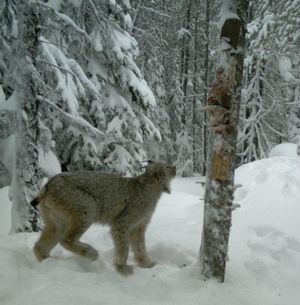Feds approve Idaho plan to boost protection for nongame wildlife
The U.S. Fish and Wildlife Service in a letter received by state officials last week signed off on Idaho’s 1,500-page State Wildlife Action Plan that identifies 205 species of concern.
Those species include already listed grizzly bears and salmon, plus imperiled sage grouse, monarch butterflies and the magnum mantleslug, which hasn’t been verified in Idaho since a dead one was found 2013.
“Ultimately, the goal is to make sure that these species don’t make the endangered species list and those that are on come off and the state maintains management authority,” said Brad Compton, assistant chief of Wildlife for the Idaho Department of Fish and Game.
Idaho has received about $550,000 annually under its previous plan developed in 2005.
Officials examined nearly 5,000 species to come up with the 205 identified as “species of greatest conservation need.” The plan divides those species into three priority categories, with 43 assigned to what the plan calls an early warning list of species possibly heading toward extinction within the state.
The plan also identifies potential threats and the highest priority actions to help specific species.
Idaho “really went above and beyond in getting input from partners and stakeholders to develop a robust method to identify the species of greatest conservation need,” said Kathy Hollar, chief of the Wildlife and Sport Fish Restoration Program for the U.S. Fish and Wildlife Service’s Pacific Region. “Idaho has a lot of biodiversity so they had a lot to work with.”
She noted the program involves more than keeping species off the Endangered Species List.
It’s “the whole idea of being able to keep common species common so you have biodiversity and the full complement of species and their interaction in the ecosystem,” she said.
Idaho’s Fish and Game is responsible for wildlife conservation of nongame species, which account for about 98 percent of the wildlife in the state. But Compton said the agency receives no Idaho general fund money. The money the agency gets from hunting and fishing license sales goes back to benefit hunters and anglers, he said.
That means the federal money is the main source for conserving nongame species.
“It is an important funding mechanism for the majority of species in the state,” he said, but noted “there’s way more work in (the plan) than what funding is available.”
The plan itself, he noted, can be a way to bring in partners and volunteers to help with specific projects. One project is working with interested farmers in a habitat diversity program that could help one or more of the struggling Idaho species.

